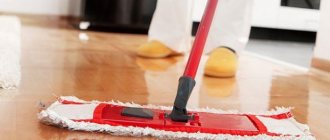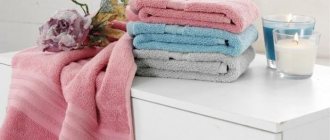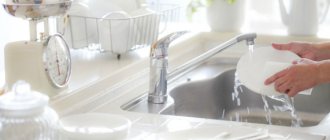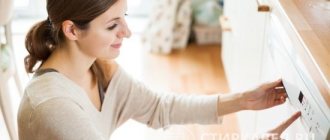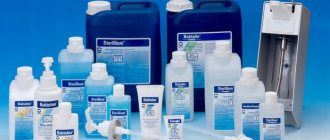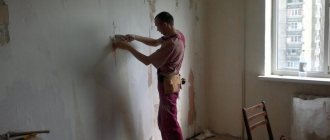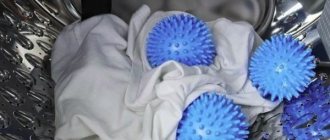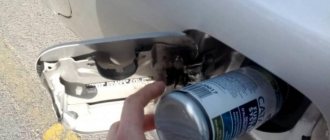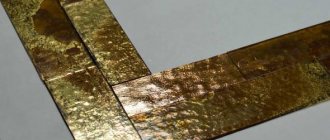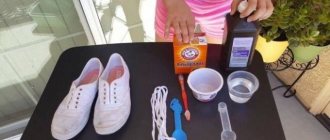Tablets used to wash dishes in a machine cost a lot of money. This is one of the reasons that makes you think about an alternative. The second reason is the chemical composition. The tablets contain substances harmful to health and the entire ecosystem.
Homemade detergents made from inexpensive and harmless ingredients will help solve the problem. How and from what to make dishwasher tablets with your own hands? This is exactly what we will discuss in our publication - here we will provide effective recipes for homemade tablets and consider the intricacies of their manufacture.
Features of the composition
Modern means for processing dishes consist of the following components:
- Surfactants (surfactants). Their main purpose is to foam the powder.
- Acids. Necessary to facilitate the removal of grease and dirt.
- Liquid softener.
- Expensive products contain sodium silicate. This substance helps prevent the development of metal corrosion.
- Flavors.
- Clarifiers.
- Thickeners.
For a long time there have been debates about the effects of these substances on the human body. It has been revealed that they are indeed dangerous when consumed in large quantities. Still, why risk your health and overpay manufacturers if you can make your own detergent from those substances that are on the shelf of every housewife?
What are the dangers of household chemicals?
Today's household chemicals perfectly break down fats and make water softer - all thanks to surfactants. The debate about their effect on the human body does not stop. One thing is clear: there is harm from them and everyone decides for themselves how to deal with it. You can rinse the dishes more thoroughly, or you can completely refuse to use store-bought products.
If you use household chemicals, read their composition. The most dangerous ingredients that may be contained in detergents are:
- chlorine and organochlorine compounds;
- formaldehyde;
- Surfactant
Harmful components cause anemia, allergies, pulmonary tuberculosis, worsen the condition of the skin and hair, provoke atherosclerosis and cancer, and reduce immunity.
Recipe No. 1 powder and soda
Soda is one of the elements responsible for the formation of a living organism. Its use in minimal quantities has a beneficial effect on its functioning.
This chemical component has the property of cleaning surfaces. The fine powder dissolves perfectly in water, does not scratch dishes or damage enamel. Making your own baking soda detergent is quite simple. This requires:
- Dissolve 1 teaspoon of fine soda in 1 glass of water. You need to stir it for 30 seconds. As a result, you should get a cloudy and homogeneous liquid.
- A small amount of hydrogen peroxide should be added to it. 1 - 1.5 teaspoon is enough.
It is recommended to use the natural composition immediately after preparation to avoid sediment. Soda will do a great job of removing burnt marks and greasy deposits. It can be used to process cauldrons, frying pans, pots, as well as small dishes and cutlery.
The resulting composition will be very liquid. When using it to operate a dishwasher, be sure to add 1-2 tablespoons of table salt to it.
What you need to know about homemade dishwasher cleaners
Natural substances can be used to make tablets, powder or gel. They can be used not only for the dishwasher, but also for washing bathroom tiles, sinks, shower stalls or bathtubs.
To make homemade tablets for PM, you need to prepare a blank in which it will be convenient to form them. A plastic mold for ice or for baking homemade cookies with small cells is suitable for this. The homemade gel can be poured into a bottle with a lid, and the tablets can be placed in a container or box.
Before you start using them, please keep in mind these important instructions for use and preparation:
- It is important not to violate the preparation technology, because some of them, in a dry state that has not been brought to a certain consistency, can clog equipment and disrupt its operation;
- When using natural substances, it is necessary to use acidic rinses. They can be made from citric acid or vinegar diluted with water. 2 tablespoons of vinegar or citric acid dissolve in 0.5 liters of water. The finished rinse aid is poured into a special compartment;
- if tap water is hard, then double the soda content in recipes;
- Soda ash can be replaced with baking soda, but the cleaning efficiency will be less.
Important! Natural homemade products are not as dishwasher friendly because... This technique is quite demanding both in terms of water quality and the composition of detergents. Experts do not recommend using them for PM all the time.
Use if the specialized ones suddenly ran out, and the dishes need to be washed urgently. Homemade ones can be alternated with ready-made ones. If you regularly use natural ones, be sure to periodically clean your equipment to prevent costly repairs.
Recipe No. 2 tablets
The best means for removing food stains are tablets. To create them at home you will need:
- Baby powder “0+” - 8 teaspoons.
- In relation to this amount, you need to add 1.8 tablespoons of soda and 0.2 dishwashing detergent.
Important! Do not add dishwashing detergent in excess of the specified amount. It will foam a lot. This may harm your home appliances.
- The composition can be adjusted independently by adding filtered water to it. As a result, you should get a viscous consistency.
- From the resulting pulp you can create tablets of any shape.
To treat dishes, the product should be placed in a special equipment drawer. It will begin to effectively cope with dirt at temperatures up to 40 degrees.
It is recommended to use baby powder so that the consistency is less aggressive and does not damage the thin enamel.
The resulting dishwasher detergent is an economical option. You can prepare more than 30 tablets of the same type that will completely remove contamination. After completing the processing, you need to thoroughly rinse the dishes with running water.
What to wash dishes with?
A dishwasher saves us from fussing with dishes, but it does not protect us from contact with harmful substances. When washing dishes in a dishwasher (DMM), various “chemicals” are used:
- powders or gels;
- rinse aid;
- universal three-in-one tablets.
Tablets are especially convenient; they contain everything you need - detergent, rinse aid and salt for water softening. It turns out that at home you can make a homemade composition for PMM, which is safe and quite effective.
Recipe No. 3 mustard
In the Middle Ages there were no technologies that are available to us now. Scale, grease and other types of contamination were cleaned with mustard powder.
It is recommended to use this natural substance to treat dishes, as it foams well and effectively washes away food residues from it. To prepare this composition you should:
- 100 grams of mustard must be mixed with the same amount of boron.
- Everything must be moved carefully. As a result, you should get a thick consistency similar to sour cream.
- Then, you need to add baking soda or soda ash to the resulting composition.
Folk dishwashing detergent can be used repeatedly. But, you can only store it in a dark and inaccessible place.
Important! The mustard should be mixed thoroughly so that no lumps remain. Otherwise, it may get into the sprinkler nozzle and damage the equipment. In addition, stains may remain on the dishes; you will have to rinse them again.
Preparing the detergent
Most dishwashing powders and other detergents are made from active chemicals that cause them to foam upon contact with water. In addition, they include a variety of acidic substances that help eat away fat and other similar additional elements that have similar properties:
- bleaches;
- sodium silicates, which prevent corrosion of metal elements;
- various enzymes;
- thickening agents;
- and others.
As you already understood, it is not known how safe they are for the human body. Of course, in small quantities they can be harmless to the body. But now we’ll talk about whether it’s possible to make a dishwasher cleaner with your own hands that does not contain the above elements.
Method No. 1
Take one glass of hot water and dissolve a teaspoon of soda ash in it and then add hydrogen peroxide in the same volume. This detergent may not be able to clean burnt-on pots and pans, but it can easily wash regular dishes, cutlery, and other items. The most important thing is that when you use this product, be sure to use salt along with it.
Method number 2
The next detergent can be prepared using mustard powder, as it foams well and can wash away grease. For this we need:
- 100 grams of mustard powder;
- boron in the same volume;
- a full glass of soda ash.
This mixture is best stored in a dark place and in a container that does not allow light to pass through. However, some dishwasher users who used mustard mixture as a detergent had problems due to the fact that the powder did not dissolve well in an aqueous environment, which caused it to clog the nozzles, but everything may depend on the quality of the mustard itself. In addition, there is a small plus in that the powder mixture can be used for washing dishes by hand.
Method number 3
This detergent can be called economical, but it still uses active chemical elements. But their concentration in the product is negligible; they cannot harm your body, except if you are allergic to these elements.
To make such a dishwasher detergent with your own hands, you will need the following:
- neonol – 25 grams;
- sulfanol – 25 grams;
- baking soda or ash soda - 950 grams.
The first chemical elements are designed to ensure that the detergent foams well upon contact with water. This product is based on soda, since 30 grams of powder are loaded into the washing machine per dishwasher, and it is not advisable to add 1.5 to 2 grams of active elements.
It is well suited for use in so-called “soft water”, but for “hard” water, it is necessary to add a small amount of salts to this solution.
See also -
What is included in the dishwasher set?
Method number 4
Now we will tell you how to make a “tablet” with your own hands. They are the most popular detergents for dishwashers, but they are quite expensive, so a solution was invented to create something similar to them. To create a “tablet” you will need the following elements:
- regular washing powder – 350 grams;
- regular or soda ash – 150 grams;
- ordinary water, as an element for the formation of bonds.
Now take a small container and mix the dry ingredients in it, gradually adding water, you should get some kind of “porridge”. After you achieve a thick consistency, take molds and pour it there (for example, ice molds and similar things).
Recipe No. 4 soap
The soap has excellent cleansing, whitening and foaming properties. To prepare a detergent with this component you will need:
- Grind the soap through a fine grater. Preferably children's or household items. For one application, 50-60 grams of shavings are enough.
- It must be dissolved in 1 liter of boiling water. You need to pour it in evenly, stirring constantly so that no lumps form.
- The liquid will resemble viscous jelly. You need to add 50 grams of soda to it.
- If desired, you can add 5-6 drops of essential oil. It will create a pleasant smell and add shine.
Next, you need to cool the gel. This effective composition will quickly deal with stains of any complexity. It can also be used for washing manually or automatically.
What should you consider when preparing homemade products?
- Size. When making dry capsules, take into account the dimensions of the tablet compartment in the PMM - a large product simply will not fit in it.
- Safety. When preparing detergents, wear a mask and gloves to prevent particles of powdered ingredients from getting into your eyes and lungs.
- Concentration. Don't overdo it with baking soda: if it doesn't dissolve, it will leave a white residue on the appliances.
Recipe No. 5: citric acid
There is another universal recipe for making detergent. To prepare it you need to mix the following ingredients:
- soda – 200 gr.
- borax -150 gr.
- sodium sulfate -500 gr.
- citric acid – 100 gr.
It is necessary to connect all components and move them carefully. This powder can be used to make tablets that can be used to clean kitchen appliances in the dishwasher. You can also dilute it with a small amount of water to make a liquid mixture.
It is preferable to use tablets rather than a liquid mixture. They are less aggressive and will remove plaque more carefully.
Making your own dishwasher detergent
Various bases can be used to produce homemade preparations. Most often, mixtures are made based on the following components:
- washing powder;
- soda ash and baking soda;
- glycerin.
There are also recipes that contain borax (sodium tetraborate), oxygen bleach, and hand dishwashing detergent.
Recipes based on washing powder
How to replace dishwasher tablets? We offer our readers several successful recipes, the main component of which is washing powder. It is best to choose a detergent for washing children's clothes, because it is the least harmful to health.
Recipe No. 1
Information on the manufacture of the product is given in table form:
| Illustration | Description |
| The detergent consists of four ingredients: • baby washing powder; • soda ash; • dishwashing detergent; • filtered water | |
| Mix 7 parts washing powder and 3 parts soda ash | |
| Add detergent and water little by little until you get a thick paste. | |
| Fill the cells in the ice tray with the mixture and level the surface of the briquettes. In a few hours, the homemade dishwasher detergent will be ready. |
Recipe No. 2
You will need the same elementary components, only in a different proportion:
- baby washing powder – 8 parts;
- soda ash - 2 parts;
- detergent – 0.3 parts.
Water needs to be added little by little until the mixture becomes a thick paste.
Recipe No. 3
Prepare the following ingredients:
- children's washing powder - 4.5 parts;
- soda ash - one part;
- quite a bit of glycerin (0.12 parts).
No water is needed; the glycerin will bind the mixture. You can use a kitchen utensil detergent such as Fairy instead. Thoroughly mix all the ingredients in a glass and place them in the cells. The briquettes will be ready for use in a few hours.
Briquettes made from baby laundry detergent wash dishes well at low temperatures (up to +40 ℃). It is under such conditions that the powder is most effective.
Recipes based on soda ash and baking soda
This section contains recipes in which the main component is soda. They are no less effective than mixtures based on washing powder. Soda-based compositions can be used for washing at water temperatures higher than +40 ℃.
Recipe No. 1
Prepare the following ingredients:
- baking soda – 2 parts;
- kitchen salt - 1 part;
- water – 1 part;
- citric acid – 0.5 parts.
There is a secret way to change the properties of baking soda or calcinate it. Place it in the oven for 30 minutes and heat to +200 ℃, stirring while doing so. The baking soda will change the consistency and the tablets will form much better.
Mix all ingredients thoroughly until smooth. Place in molds and wait until dry.
Recipe No. 2
You will need ingredients in the following proportions:
- soda ash – 50%;
- oxygen bleach – 30%;
- children's washing powder – 20%;
- water and detergent to form a bond.
Add water and washing gel little by little until you get a thick porridge suitable for pouring into molds. Typically, briquettes dry in 8-12 hours.
Features of use
In order for the dishes to be clean and fresh after washing, it is necessary not only to properly prepare the product, but also to observe all the necessary measures during this process.
- The mechanism is designed in such a way that the jets hit from bottom to top. Accordingly, the dishes must be placed strictly vertically. Otherwise, streaks or particles of contamination will remain.
- If you use homemade dishwashing gel, it is recommended to wash the dishes on a delicate cycle.
- It only needs to be added to the dispenser. It is strictly forbidden to throw it into the cell.
- Detergent is added only once before starting work. In the future, it will not be needed.
- The exception is salt. It must be placed in a special compartment located at the bottom of the chamber.
- Without fail, the product must be a single consistency. There shouldn't be any lumps in it. Such a seemingly trivial mistake in most cases leads to clogging of important parts of the mechanism, and subsequently to its breakdown.
- After completion of the equipment operation, it is necessary to carefully examine the dishes. If there are deposits or remains of a folk invention on it, then you need to additionally rinse it manually.
- If the product is made in the form of tablets, then you do not need to make them too large, as they may not fit into the compartment.
- You should not use soda in large quantities, as if it is in excess, the liquid may thicken in the compartment.
Important! Wear gloves and a mask when making dishwashing gel. Many components are very volatile and can damage the skin of the hands or mucous membranes.
Homemade dishwashing detergents vs. store-bought ones
Many people know that household dishwashing chemicals contain components that can harm the body and the environment. Manufacturers claim that their products are harmless and advertise their benefits in every possible way. The emphasis is on quick rinsing of gels.
In fact, to remove products from the surface of the dishes, you need to rinse them under running water for at least 10-15 seconds.
You've seen unfamiliar "chemical" names on the label and may not realize how harmful they cause. Most often this is:
- phosphates, phosphonates;
- chlorine-containing substances;
- surfactant;
- sodium;
- formaldehyde.
And also “blurred” names: bleach, fragrance. In this case, the manufacturer does not decipher the components that are included in their composition.
These substances can accumulate in the human body. Most of them do not decompose in nature, which leads to a decrease in water quality.
Therefore, we suggest making eco-powder, tablets or gel at home.
The simplest option. Mix one teaspoon each of baking soda and hydrogen peroxide in a glass of warm water to prepare the liquid.
An aqueous solution is unlikely to cope with complex stains, but it is an excellent option for washing dishes and cutlery.
Even using folk recipes, do not forget to add special salt to the dishwasher, which protects the parts from scale.
How to make powder
What will you need to prepare? Everything is at hand.
First option. The universal recipe is suitable for washing dishes by hand and in a washing machine: prepare half a glass of borax and the same amount of mustard powder. Mustard foams well, helping to wash away dirt from dishes.
Add one glass of soda ash and stir. Store the powder in a dry, dark place.
Some users complain that mustard powder clogs the filter and spray nozzles. Others recommend this method for use.
Second option. This composition is aimed at greater washing effect; it contains a small amount of surfactants. You will need: 25 g of neonol and sulfanol, 950 g of soda. Surfactants serve to foam and enhance the cleaning properties of soda. Having studied the composition of the detergent in the store, customers decided that they could wash the devices in a less aggressive way.
One kilogram of powder will cost 50 rubles. You can buy surfactants in the store.
Additionally, do not forget to add salt to the ion exchanger tank.
How to prepare tablets without leaving home
If we can handle the powder, what should we do with the tablets? Today these are some of the most popular and expensive detergents: 3-in-1, 4-in-1, 5-in-1, 8-in-1 and so on. Manufacturers never tire of adding more and more new components. We offer an affordable alternative.
Consumer reviews have convinced us of the effectiveness of homemade tablets.
- Mix 350 g of washing powder (its composition is not much different from detergent for PMM) with 150 g of soda (for softening and cleansing). Add a little water for viscosity. Bring until smooth and place in ice cube trays (or others). The main thing is that the water tablet fits into the dispenser compartment.
- Take 80 g of baby powder (for example, “Stork”), 18 g of soda. Mix them and add some dishwashing detergent. Knead and place in molds. Use at a temperature of 40 degrees (Eco program).
- Mix 150 g of baking soda with 200 g of borax, 1.5 kg of magnesia. Condition with lemon juice or citric acid solution (gives the dishes shine and shine). This composition is more environmentally friendly than previous options.
What is important to consider:
- Size . A large tablet will not fit into the compartment.
- Protection. Wear gloves and a mask when making. The components are very dusty.
- Concentration . A large dose of soda does not dissolve well, leaving a residue on the devices.
- Mood . Don't feel like kneading? Add dry ingredients, but some may spill out.
How to make your own gel
A simple and versatile recipe:
- Boil one liter of water.
- Add 50 g of laundry soap shavings.
- Stir until smooth.
- Pour in 45 g of soda ash (not baking soda).
- Stir until dissolved.
- Let the mixture cool.
- Add a couple drops of your favorite essential oil for scent.
This unique product is ready to use. Pour it into a convenient bottle and use it for washing clothes or washing dishes.
Regular apple cider vinegar (9%) is suitable as a rinse aid. Add it to the rinse aid compartment at the rate of 1 tablespoon per 6 sets of dishes.
A more complex option: five tablespoons of lemon juice, two tablespoons of essential oil, one spoon of glass cleaner. The ratio can be increased, but keep in mind that homemade mouthwash does not last as long as store-bought one.
This is interesting: Electricity Saving Box
Advantages
There are five of the most effective proven recipes for folk remedies suitable for processing kitchen utensils. Why is it worth using a folk invention rather than using a gel that is sold in a store? There are several reasons:
- This is a very economical option. The cost of any homemade product does not exceed 100 rubles, and its volume will last for several months.
- If it runs out, then don’t run to the store. You can create a cleaning ingredient at any time.
- The composition can be changed independently, depending on your own preferences.
- This is an excellent option for those housewives who care about their health. She will see for herself what is included in it. You will be sure that there are no chemical additives in it.
How much money does it cost per year?
Saving is one of the arguments for creating “folk recipes”. What amounts are we talking about? Costs depend on the type of special equipment:
- Tablet preparations - 6,000 rubles;
- Gel or powder product - 2000-3000 rubles. But when using them, you also need a rinse aid - plus 1000 rubles. Total 4000-5000 rubles.
A small family spends the same amount to pay for electricity for six months. There is a reason to think about saving.
Flaws
There are several disadvantages to using a homemade liquid consistency.
- It is more convenient to use a purchased product. It is enough to open the cap and pour the required amount of liquid into the specialized compartment. Accordingly, the user does not have to spend his personal time preparing it.
- It is not always possible to invent a high-quality product. An incorrectly created composition may leave residue or impurities may not be washed off well.
- The resulting consistency may not look aesthetically pleasing.
- When using certain ingredients, such as mustard, cutlery often leaves an unpleasant odor when it comes out of the dishwasher.
- The most important disadvantage is the possibility of equipment damage if the composition is not mixed correctly and lumps form in it.
Should you make homemade dish detergent or buy it at the store? There is not and cannot be an exact answer to this question. Each housewife will independently determine what is more convenient for her to use, based on personal preferences, amount of free time and financial situation.
Ingredients for homemade compositions
To restore order in the house, housewives often use powders and liquids available in the kitchen. They are the components of complex compositions for the dishwasher. Each ingredient performs one or more cleaning functions:
- Powder (notional) from laundry or baby soap is a surfactant: the main component of the detergent. First, the soap bars are dried, then crushed on a grater. Small soap remnants are also suitable for preparing the powder.
- Baking soda – acts as a cleaning agent. Keeps dishes white. It won’t cope with grease, but it will remove scale and stains from tea.
- Epsom salts, magnesium or sodium sulfate. The appearance resembles coarse table salt, but has nothing to do with it.
- Citric acid - removes limescale and scale from the surfaces of the dishwasher chamber and its heating element.
- Borax, sodium boric salt – has cleaning and disinfecting properties. Sold in pharmacies and hardware stores.
- Glycerin is a viscous, colorless liquid with a sweetish taste. Antiseptic and good solvent.
- Table vinegar – kills bacteria and microorganisms, used to remove lime salts in household appliances.
- Mustard has long been used to clean grease from baking sheets and frying pans.
To give the dishes a fresh smell, you can add a few drops of essential oil to the prepared composition. Additions of citrus aromas also help dissolve fat. It is recommended to add table salt to any mixture - it is used as a hard water softener.
Have you set the water hardness in PMM?
Yes, of course. No.
